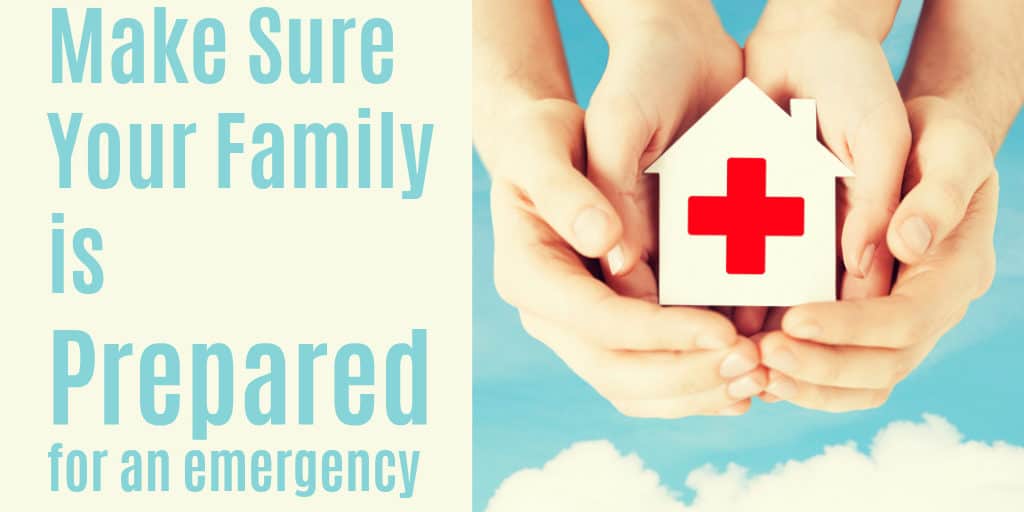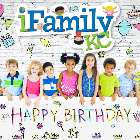Create Your Family’s Emergency Plan of Action (Emergency Planning Guide)
We don’t need an emergency action plan, “It will never happen to us…”
You’ve probably thought it…and hopefully you’re right.
…but the reality is:
It’s Never Too Early for a Family Emergency Action Plan

Disasters are unpredictable and can happen to anyone, at any time. Emergency preparedness is something your family needs to be thinking about.
Creating an emergency preparedness plan can help your family stay safe and reconnect if a crisis or emergency situation occurs.
Disclaimer: iFamilyKC is supported by our readers. We may earn a small commission if you purchase something from one of our links.
Check out these Emergency planning tips from The Family Conservancy; a LOCAL organization working to empower KC families for a successful future. Helping Children & Strengthening Families since 1880.
Emergency planning is important for your family’s safety (especially kids)…do it.
Family Emergency Plan: Create It.
Between school, child care, work, and the unexpected curve balls life throws our way, your family may not be together when disaster strikes.
Creating an emergency plan ensures everyone understands how to respond and connect in the event of an emergency. Give yourself peace of mind knowing that your kids know what to do in emergency situations.
Consider these tips to help prepare your family for an emergency:
- Know what types of disasters are common in your area and practice the appropriate response.
- Have a family emergency action plan with two meet-up locations. One that is close to home and another that is farther away — a relative’s home or a community center. Make sure everyone knows what locations are appropriate for different types of disasters.
- Include communication information for all family members, caregivers, schools, work, and a contact person your children know and trust who lives in the immediate area.
- Create a disaster supply kit with water, flashlights, nonperishable foods, phone chargers, blankets, and items that will help comfort children. Below is a full list of emergency kit ideas.
- Ensure emergency plans meet the needs of every family member. If family members have special needs or disabilities, consider how their needs will be met.
Document and Practice Your Emergency Plan
- Write down your emergency action plan. You can find a great template from the American Red Cross. Keep copies around the house and practice emergency preparedness with your kids at least once a year.
- In addition to your emergency action plan, create ICE (in case of emergency) cards. You can use this simple template from the Red Cross.
Create or Buy an Emergency Preparedness Kit
You’ll want a ready-to-go kit for your home, car, & office since you never know when disaster will strike.
You can purchase pre-made, emergency preparedness kits or create your own kit based on Ready.gov recommendations. Below are the things to include in your emergency kit. You can also check the Red Cross Emergency Supply List for a full inventory:
-
-
- Food & water (at least 3 day supply)
- Battery-powered or hand crank radio and a NOAA Weather Radio with tone alert
- Flashlight
- First aid kit
- Extra batteries
- Whistle to signal for help
- Dust mask to help filter contaminated air and plastic sheeting and duct tape to shelter-in-place
- Moist towelettes, garbage bags, and plastic ties for personal sanitation
- Wrench or pliers to turn off utilities
- Manual can opener for food
- Local maps
- Cell phone with chargers and a backup battery
- Glasses and contact lense solution
- Important family documents such as copies of insurance policies, identification, and bank account records saved electronically or in a waterproof, portable container
- Sleeping bag or warm blanket for each person
- Change of clothing & shoes
- Household chlorine bleach and medicine dropper to disinfect water
- Matches in a waterproof container
-
Emergency Kit for Pets
- 2 gallons of water
- Extra collars, harnesses and leashes
- Packets of food (remember if you have cans, you may need a can opener in your kit as well)
- Collapsible bowls
- Plastic bags for waste
- Pet carriers
- Blankets
- Pictures of pets in case you get separated
- Any meds your pets may need
Often in cases of a disaster, you may lose contact with extended family. So, consider a place where you can meet if you lose contact.
You can also create an emergency plan with neighbors & friends who live close by.
Emergency Plans with Your Child Care Provider
If your kids spend time in child care or other schooling, it’s important for your provider to have an emergency plan. Ask your caregiver how they will respond to various disasters and make sure they have a copy of your child’s ICE card.
If your childcare provider needs emergency preparedness support, have them contact The Family Conservancy.
There’s no such thing as being over prepared. Hopefully, you never need to evacuate your home, but someday you may. Having these things on hand could be invaluable.
Your family is your greatest blessing and an emergency action plan is an important tool to keep them safe. Be sure to begin your emergency planning as soon as possible. It is important to have emergency preparedness kits ready & for your kids to know what to do when an emergency or crisis occurs. We hope these tips help keep your family safe during future emergency events.
Brought to you by The Family Conservancy
Helping Children & Strengthening Families since 1880.
Make sure you stay up-to-date on all things kids with the iFamilyKC scoop. Sign-up now to get the Weekend Planner sent straight to you each week with fun things to do this weekend in Kansas City!
Looking for childcare for your kiddos? Check out the Family Conservancy’s article on choosing the right childcare provider. They also have tips to help your kids avoid the Summer Slide & summer learning loss.
From our family to yours, iFamilyKC.







